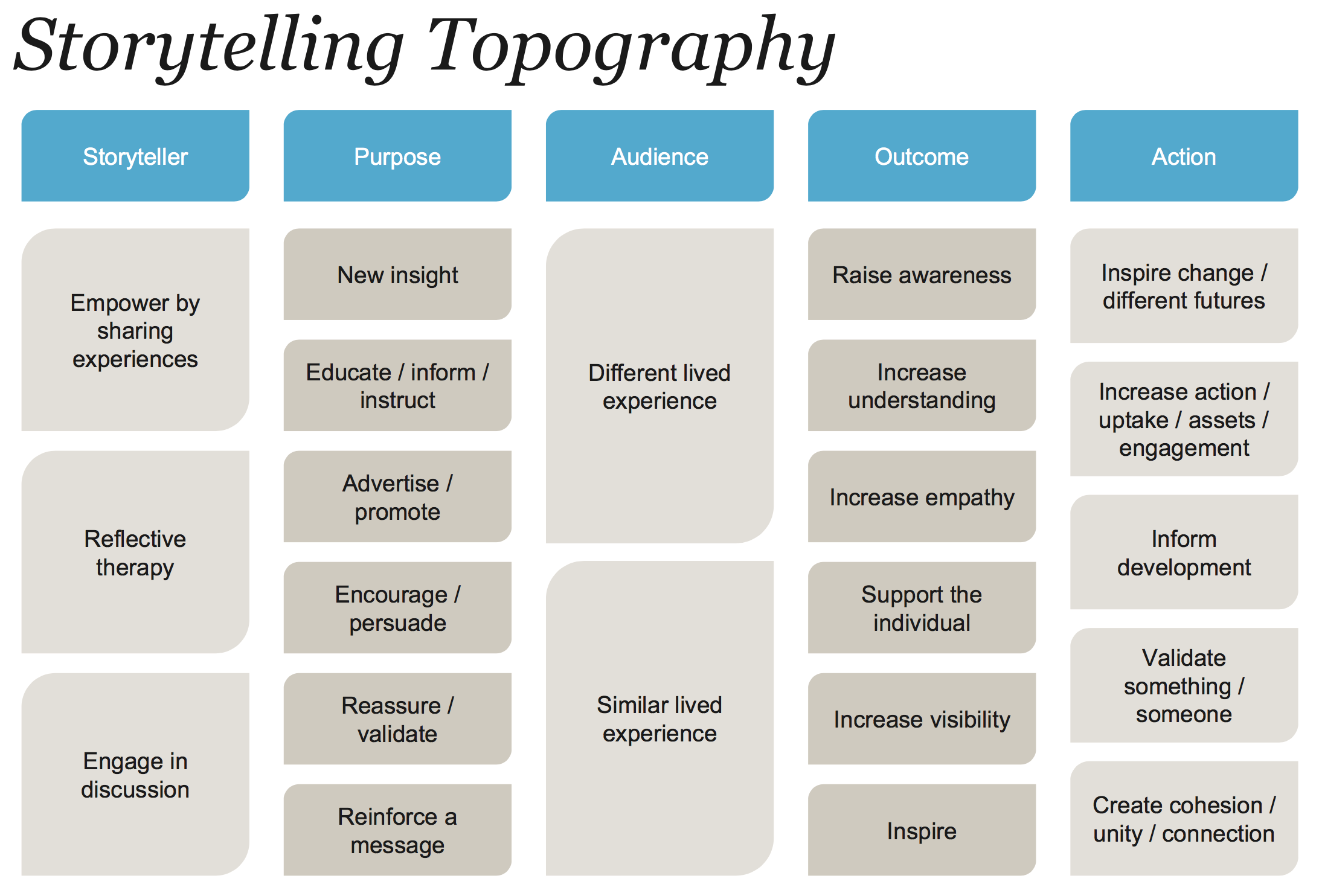As part of the Q Improvement Lab’s work to explore how to make peer support more widely available, one of the areas of work we focused on was how to generate sources of evidence that capture the holistic impact of peer support. One element of this was looking at how stories could be captured and used to help build this evidence base.
This blog briefly summarises what the Lab did on storytelling; why those collaborating with the Lab (Lab participants) felt that stories are important and the ‘storytelling topography’ that we created. Although the Lab focused on peer support, this could be of interest to Q members who are using – or thinking about using – stories and storytelling in their improvement work.
The importance of stories
Throughout the Lab’s work on peer support, we heard from Lab participants that current evidence and evaluative metrics aren’t able to capture the whole picture or accurately reflect the life-changing benefits of peer support.
Stories are currently being used in hospital board meetings and as part of improvements to service delivery. They are, however, often seen as ‘nice to have’ and their value is still not widely understood.
We found some great examples of stories being used in charity fundraising campaigns, in campaigns to raise awareness, to promote peer education programmes and as qualitative research into patient experience. However, we also found that it’s not always clear who’s doing what and for what purpose, which makes it tricky to know who to learn from and where to start. We found helpful resources on things like structuring narrative and practical ‘how-to’ type guides, but we couldn’t find much information about the intention of stories and the positive changes that could be caused by them.
A storytelling topography
To this end, we looked at example stories to decipher the reasons behind creating them, how the stories were being used and the desired outcomes of sharing them. We ended up with a whole range of possibilities which quite naturally grew and developed into a tool, which we’ve called a ‘storytelling topography’. The topography allowed us to more easily navigate this busy landscape by helping us to categorise stories based on their intention.
This draft hasn’t been scrutinised and you might not agree with it, which is ok. We’re sharing the topography as a potential building block, conversation and idea starter.

The first column of the topography considers the storyteller’s point of view and what the benefit to and motivation for the storyteller might be. The middle columns are about the purpose of the story; who the story is aimed at and for what reason. The last two columns are about the overall aim of capturing and sharing the story. By going through each column and identifying the relevant rectangle, each story ends up with its own ‘fingerprint’.
The storytelling topography is open-source and you are welcome to use, build on and change it. We think the topography could be used:
- To help plan, create and use stories.
- To identify stories that have the same desired outcome as you may want to achieve in order to draw inspiration from them.
- To start conversations about the potential of stories.
- As a base to add more detail and incorporate other aspects of stories such as type of narrative, format and logistics.
Next steps for storytelling
We have pulled together some links and resources which may be helpful or interesting, as well as examples of stories in use.
There is still more work to do on storytelling in health and care and we’d be keen to hear from Q members that are doing work in this area. Potential areas of opportunity and further development on this area could include:
- practical guidance on how to share and collect stories
- advice on how to use stories to achieve impact
- validating stories as a useful product in health and care
- training to improve storytelling skills
- improving clarity and understanding of how to tell authentic stories that aren’t misleading or that ignore the wider context
If you have an interest in this topic area and you want to progress this work, please use this work as a springboard. We were only able to scratch the surface!
If you have any thoughts or feedback on the topography or on this piece of work, please do not hesitate to get in touch at QLab@health.org.uk.